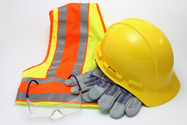How to stay safe
Safety##mdash;in the hospital and in life##mdash;is about more than following prescribed systems.
It was 1981 and I was camping in the Pike National Forest with my college friend Stumpy. We had parked my car on the side of the road and headed for higher altitude. Our rations comprised four days of dehydrated dinners, a jug of crunchy peanut butter, an ancient bag of trail mix and a bottle of peppermint schnapps.
We headed up a faint trail though golden aspen and evergreens. Stumpy was carrying the heavier backpack, though he did not know it since I had packed them. As he grabbed a low-hanging branch to pull himself up a steeper grade, the branch broke and he began a slide towards the edge of the nearby ravine. I grabbed his pack as he slid by, halting his precipitous descent. After all, he was carrying the schnapps.

It was 2013 and I was on night call. The admissions were coming in hot: I was juggling calciphylaxis, multiple compression fractures post fall, and garden variety community-acquired pneumonia. I was triaging my effort, reviewing records, taking histories, performing exams, making diagnoses, and writing orders. Business as usual. The patient with calciphylaxis was first on my list. She had been on hemodialysis for years and now was writhing in pain. I considered treatment with sodium thiosulfate, or maybe hyperbaric oxygen, low-dose tissue plasminogen activator, or biotherapy with maggot debridement. While I sat there cogitating, the nurse stood by me tapping her foot. Was I going to order some pain meds or not?
I typed in the order for a large morphine bolus, and patient-controlled analgesia dosing with basal rate. I was about to hit the enter button, when my medical student asked me what I was going to order. I used my favorite teaching method: I asked what she would do. Her response was fentanyl due to metabolism issues, and definitely not morphine. I smiled and told her she was exactly right. As soon as she walked out, I changed the order.
Stumpy and I hiked, climbed, scrambled, rambled, and stumbled as far as our rubbery legs would take us. Exhausted, we dropped our packs by our proto-campsite. The ground was hard; it was cold and windy. We realized there was no firewood, we were above the tree line, and our tent pegs would not go in the ground. There was no water, and we had drained our canteens long ago. Ah, the joy of camping. No fire, no water; we ate dry freeze-dried food, and froze.
The next morning, we lugged our bedraggled, dehydrated and ravenous bodies below the tree line. We spotted a stream, and some mushrooms that Stumpy assured me were safe, though possibly hallucinogenic. We picked up the fungi, and bent over the stream to fill our canteens. I was about to drink when a grizzled old hiker came up the trail—and knocked the canteen from my hands. He asked politely if we were nuts: the water was loaded with giardia and the mushrooms were poisonous. Furthermore, there was a campsite with water just 100 yards down a fork in the trail.
My patient with compression fractures was obviously in pain. Her family hovered close by, and expectations for relief were high. I suggested conservative therapy: brace pain medications, nasal calcitonin and physical therapy. They suggested vertebroplasty. I reviewed the literature with them; they reviewed Aunt Sally's excellent response when she had hers done. Anecdote beats evidence every time. I ordered an MRI in preparation for the procedure.
The patient's daughter then mentioned her mother's severe claustrophobia, asking if there was an open MRI. There wasn't, so I told her I would order some lorazepam. The nurse was about to administer when the patient's son, a pharmacist, asked what was being given. Hearing the answer, he blanched, and stood between the nurse and the IV port. “Don't give that,” he commanded. “She got acutely psychotic the last time she got a benzodiazepine.” He assured me she could do without. Meanwhile, the patient assured me it was her daughter who was claustrophobic, and she would be fine with an MRI.
Safety, whether in the hospital or in a forest, is not just about following prescribed systems. It's about perseverance, situational awareness, and the willingness to listen to someone who knows more than you. Realize that, and you may save a patient's life someday—or even your own.



